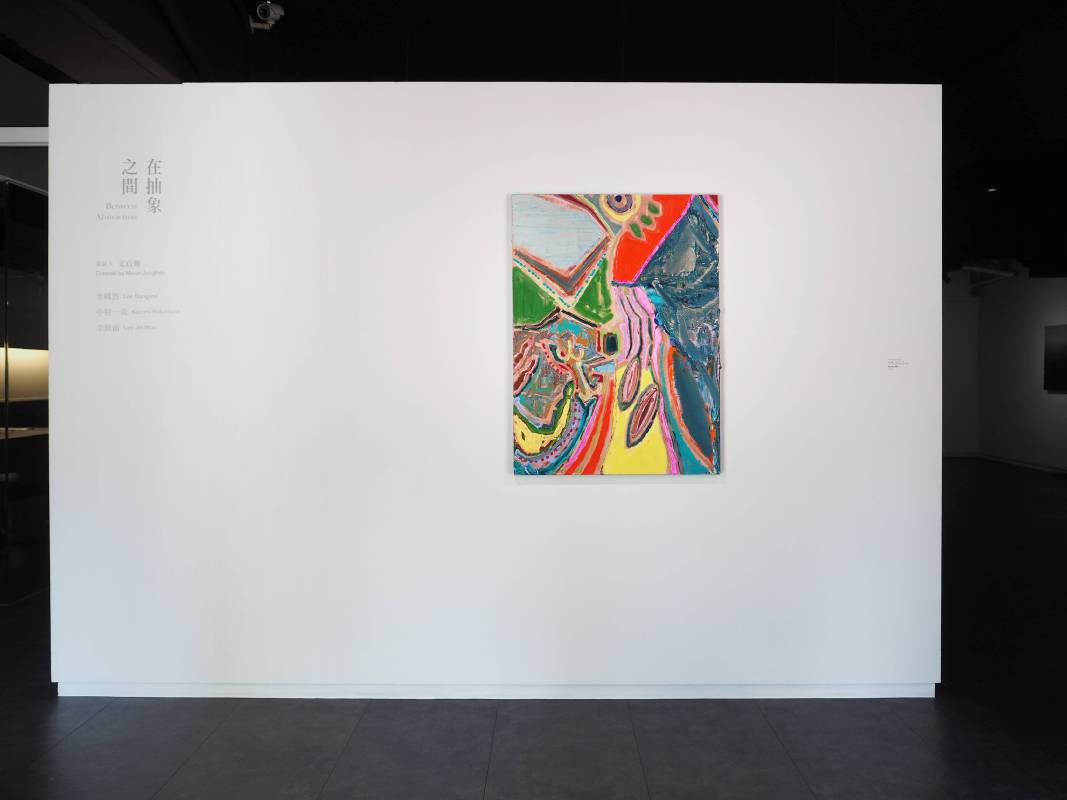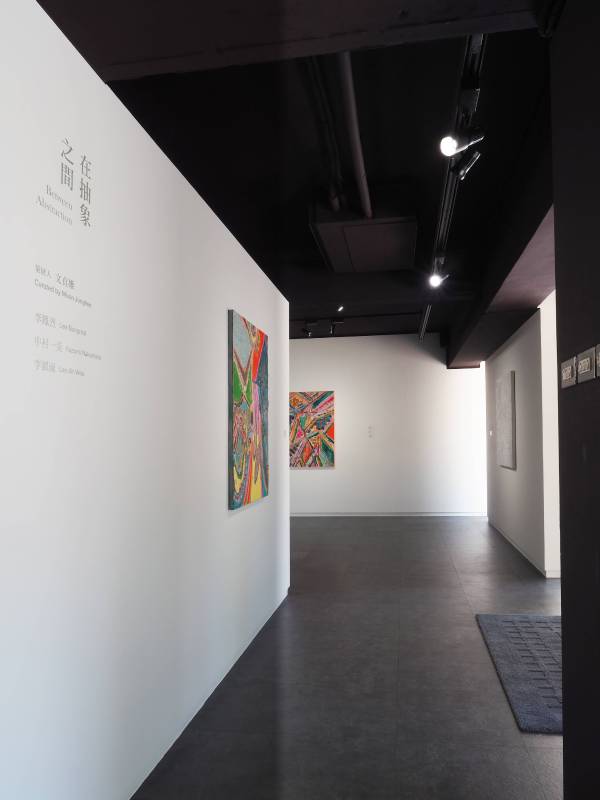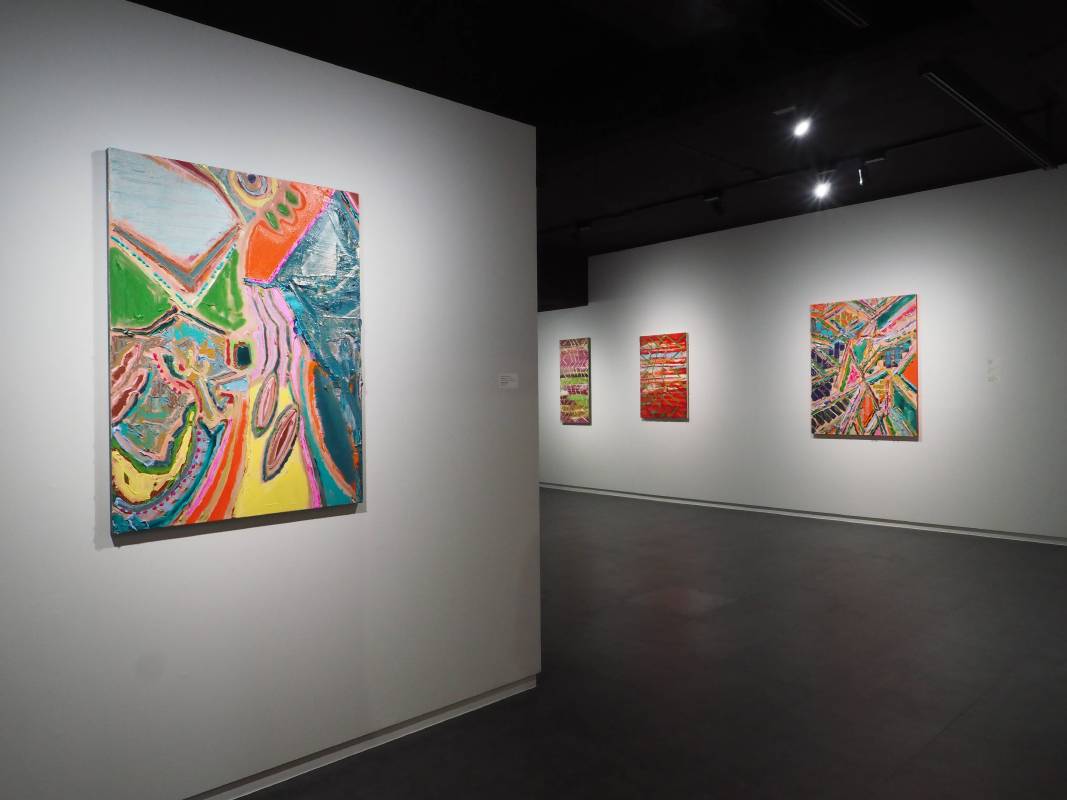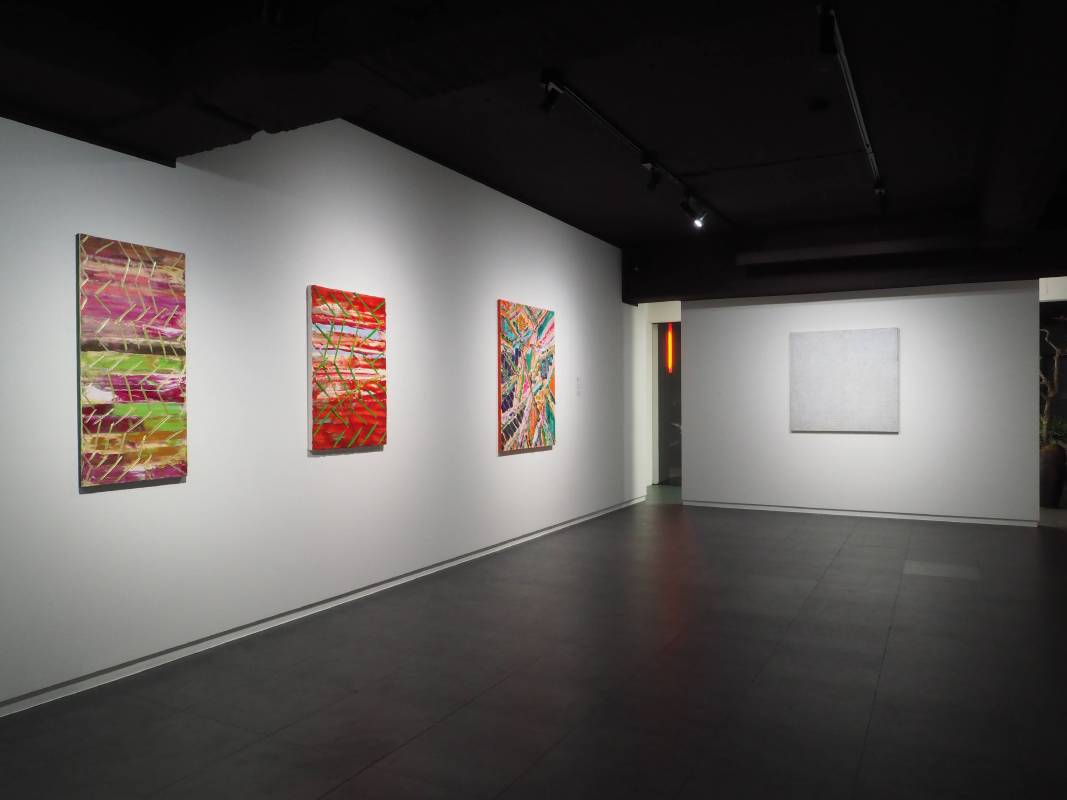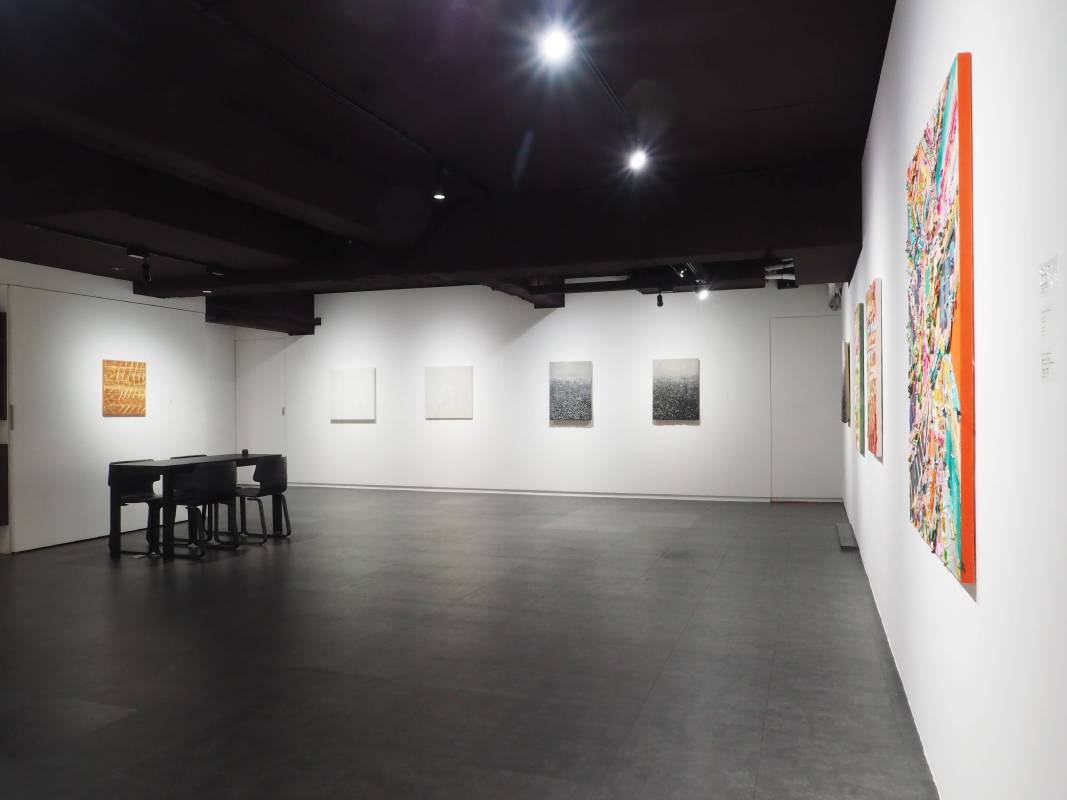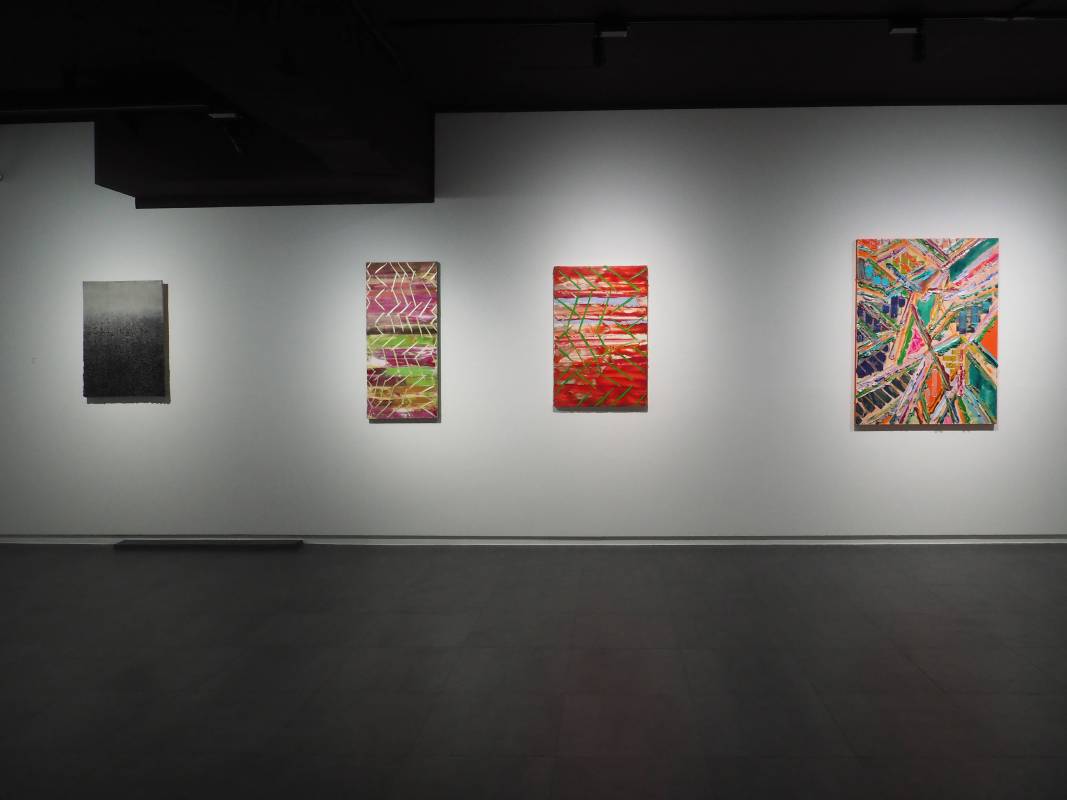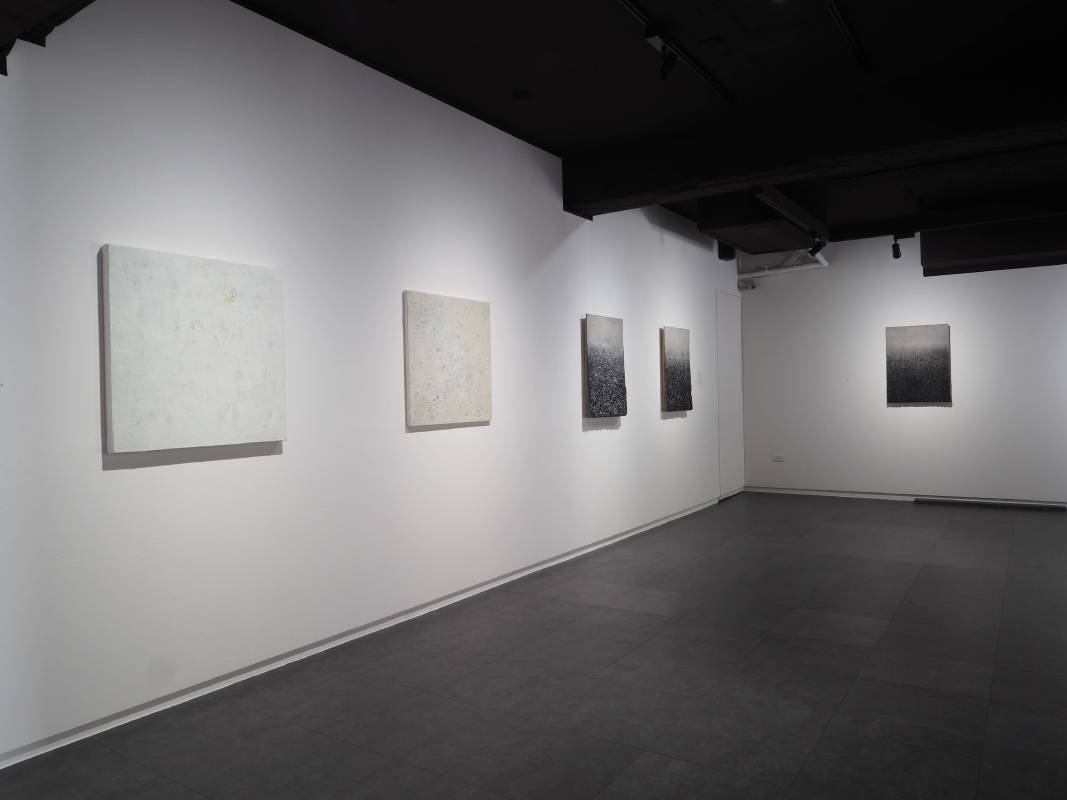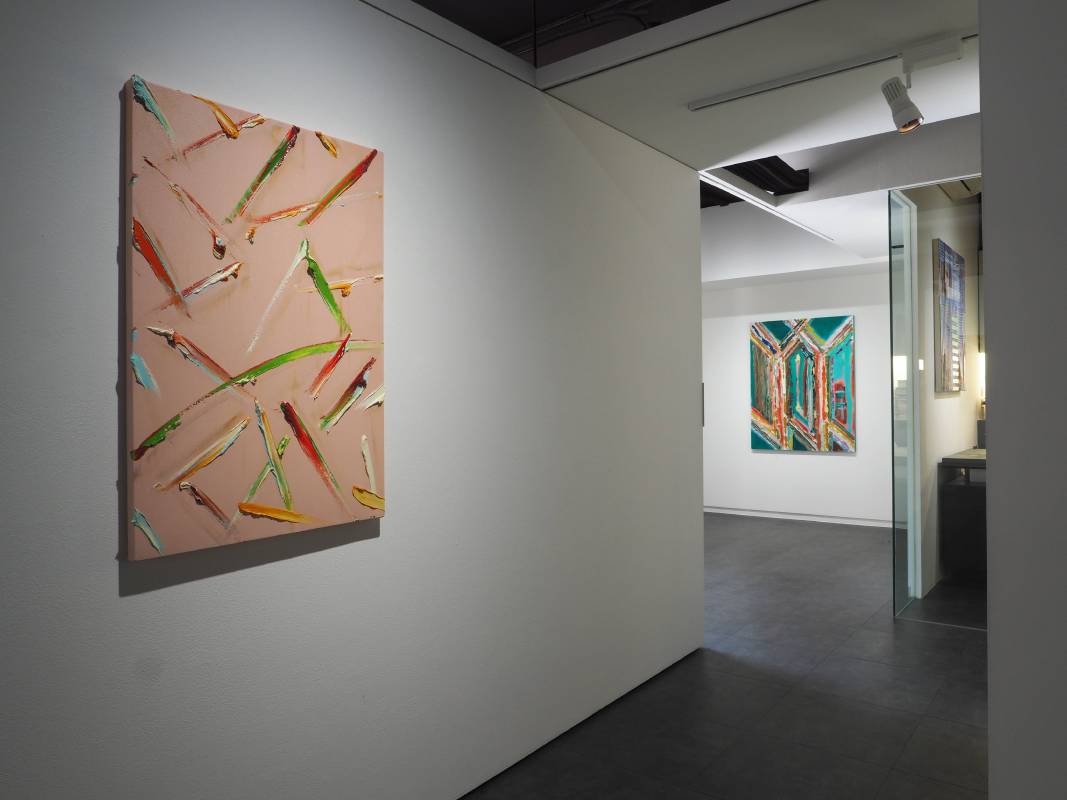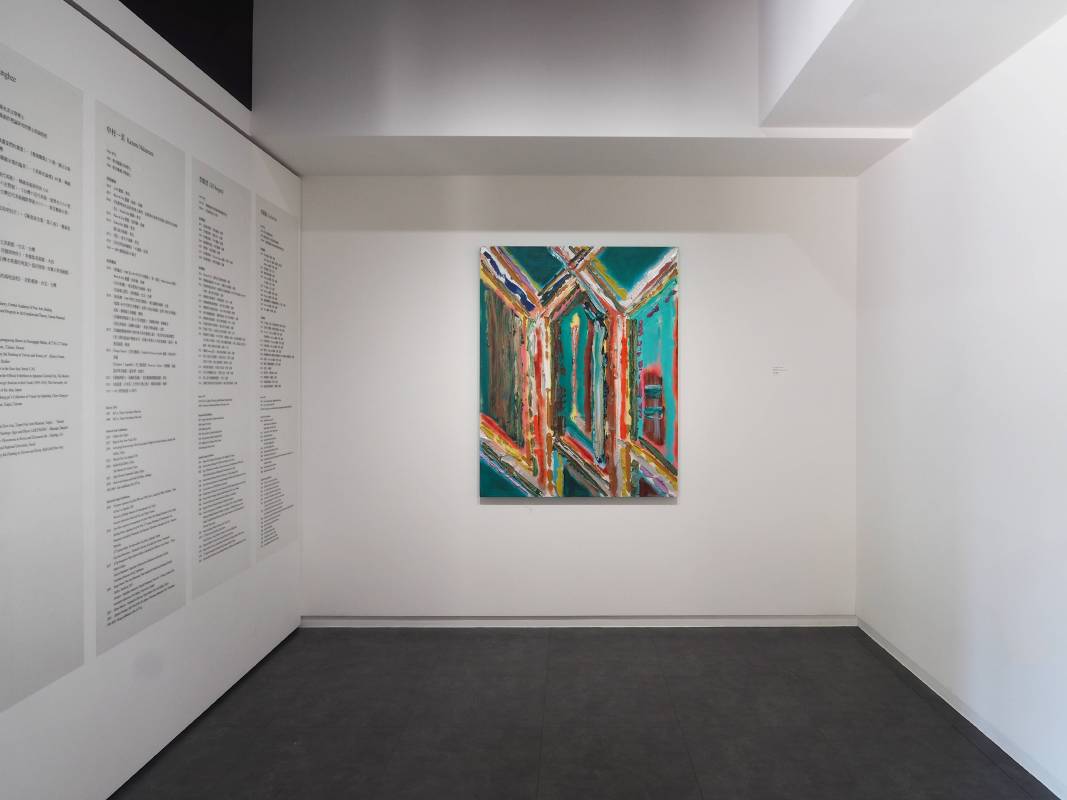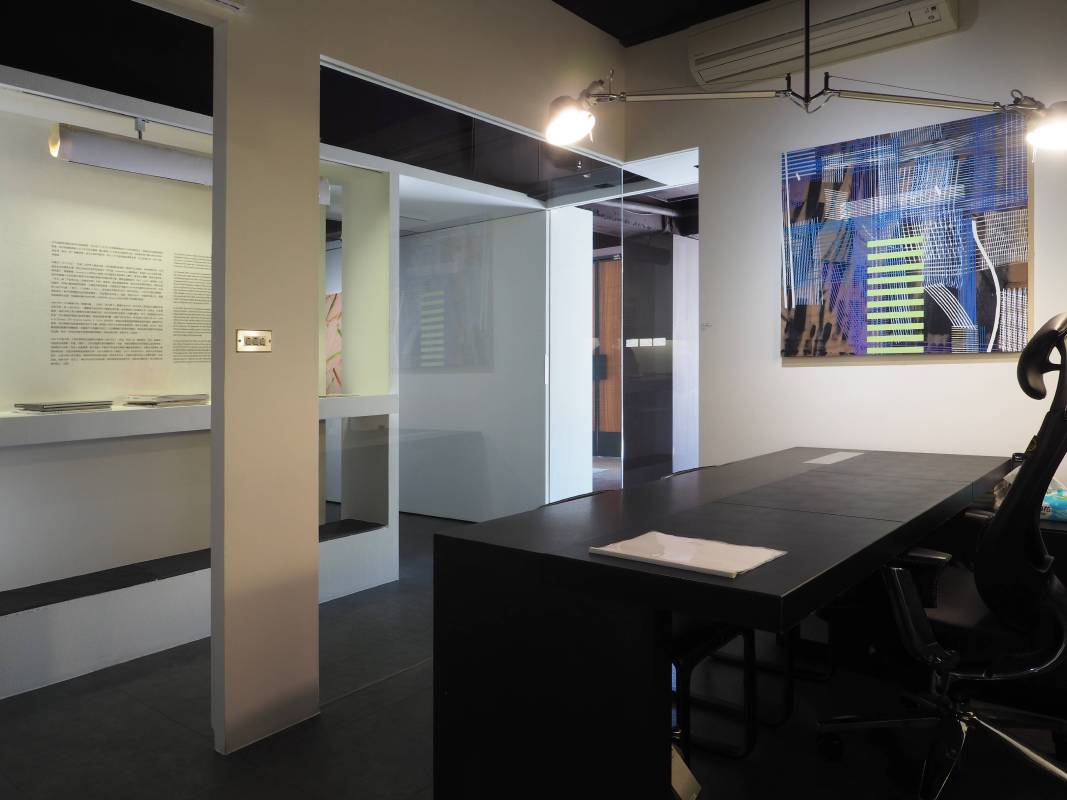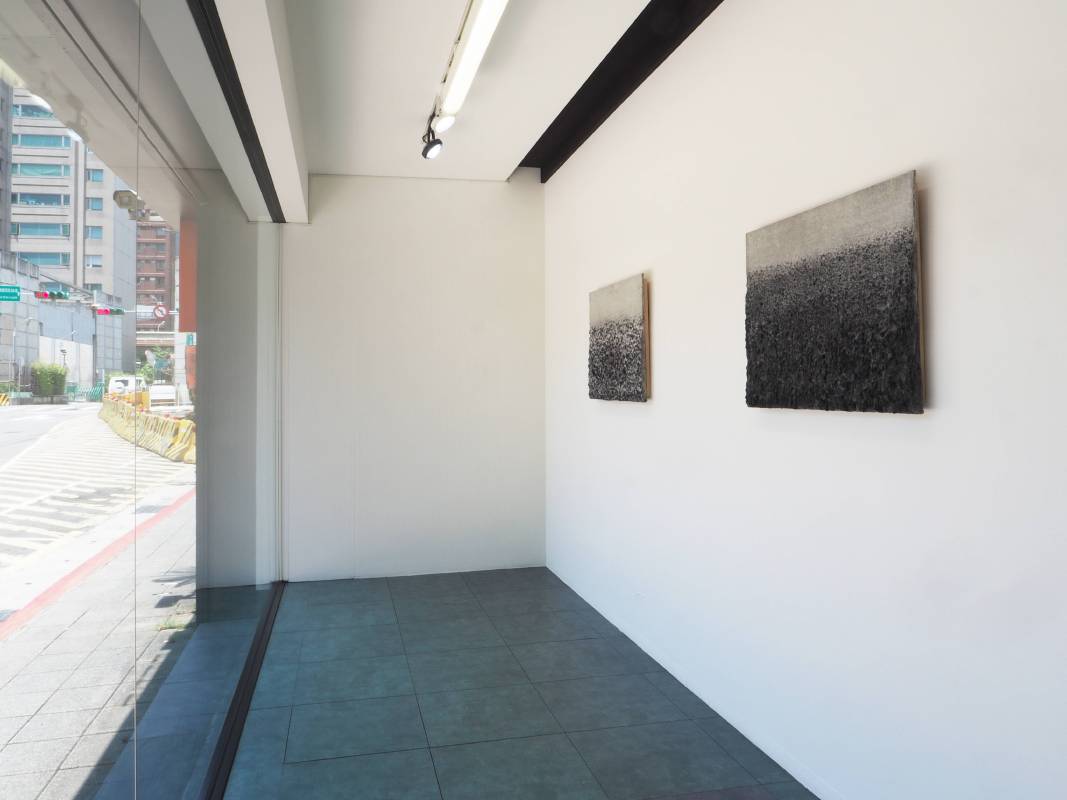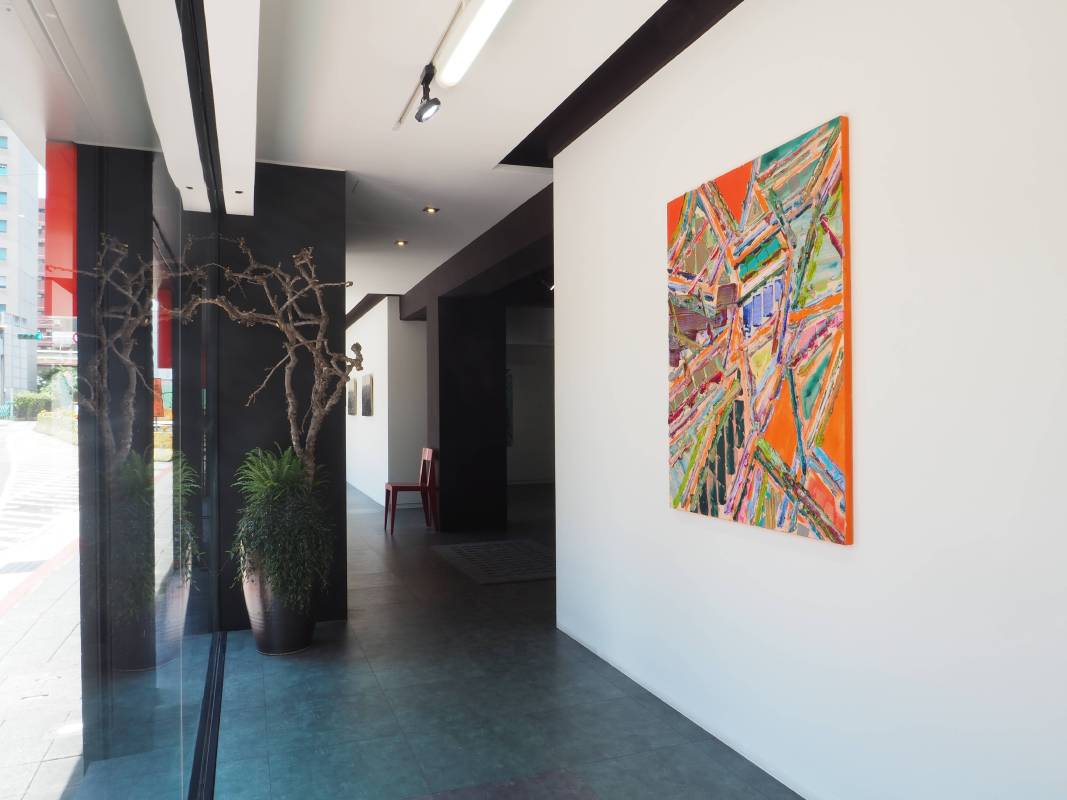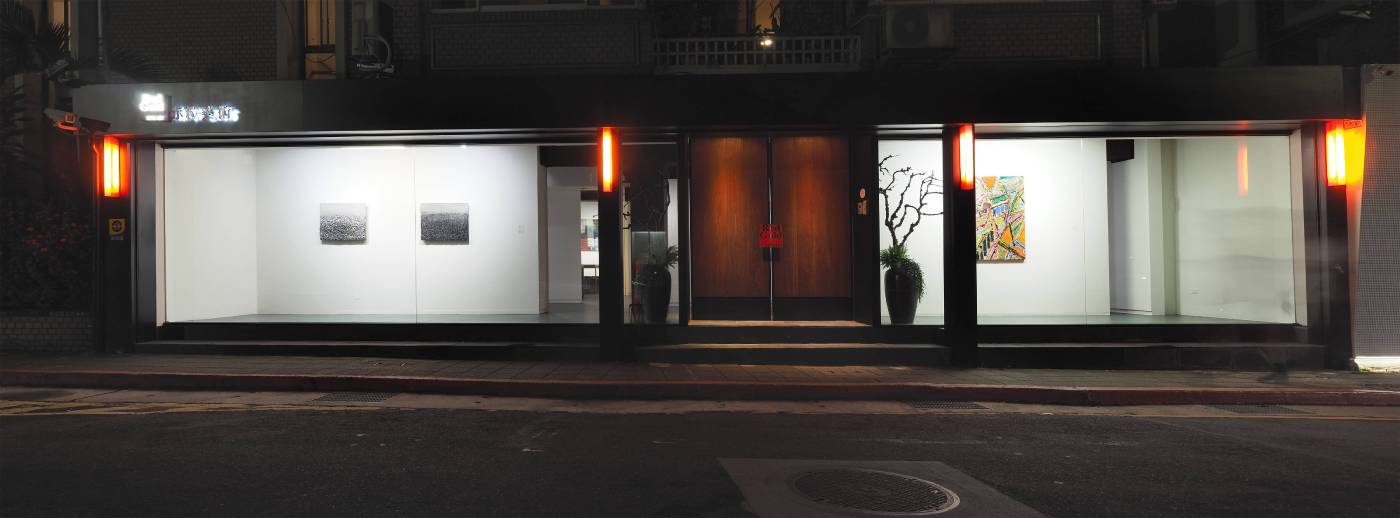赤粒藝術
【在抽象之間】

-
在抽象之間
文貞姬Moon, Junghee(國立台南藝術大學副教授)
藝術史上,相對立「抽象」的思潮發展,即是「具象」對「抽象」。這樣的對立關係,就好比超現實主義與抽象主義、西方抽象主義與東方抽象主義之對立指稱。而綜觀東亞抽象主義發展,我們可以回溯到1930年代,日本接受「抽象‧創造」畫派思潮起,且於第二次世界大戰結束後,現代藝術中登場的歐美「非定形藝術」(informel art)與抽象主義脈絡上,以上這些都是我們在詮釋東亞抽象繪畫論述不能輕易忽略的部分。今日,我們透過詮釋抽象作品,除了可以看到創作者反省當下現實問題外,創作者亦藉由作品開展出新的藝術世界。
李鳳烈(1937年生),於第二次世界大戰結束後,身為韓國抽象畫第一階段的代表畫家,他的藝術理念,首先是從非定形藝術出發,再走出異於其他單色畫家的「單色畫」(monochrome)藝術階段。李鳳烈1967年遊學法國,他見證了「極簡藝術」(minimal art)表現出人類個人如何隨著社會結構性之變化,進而加以轉變,值得注意的是,他利用韓國人生活空間中經常可見於韓屋建築內的樹木格子窗,透過這樣隔窗的「格子」(grid),極簡地二分出「外在」與「平面性內在」的感受空間。同時,他做為一個在韓戰結束後,無法回到北韓的異鄉人,藉由自身的創作,表現出濃厚純粹的鄉愁,上述這些情感表達,可清楚見於李鳳烈1970年代所創作出來的作品內;而來到1980年代後,「格子」(《空間》(1987))成為指向李鳳烈作品內「面的平面性」;1990年代後半葉開始,甚至迄今,格子的解體與內在的能量湧現,一直是他作品的重心;最後,來到2010年,李鳳烈的畫布上,透過單純純粹的色調,與線條流動的自然空間,共同作用(synergy)出長久時間下所凝縮的能量。
1980年代,日本藝術中的「繪畫回歸」,主要以「斜行格子」繪畫作為大宗,其中代表人物即是日本國內外知名的中村一美(1956年生),他觀察外部世界的不確實性與災難,從而展開自己的藝術世界。而做為一位專業畫家,他從未停止努力實驗著多樣的藝術空間,其作品受到許多藝評人持續的關注。其中,他透過斜行系列作品,以五感感官誘導出規律的構造,最後依循畫筆筆觸,瓦解了斜行的形式。特別是他《存在の鳥350 A Bird in its Existence 350 (Cisticola Juncidis) 》(2019)此系列內,傳達出具象與抽象間繪畫起源的意象,讓我們可以看到,其中飛翔的鳥就像穿梭在前世今生般,傳達給人們古代文明的命運與信仰一般的存在象徵,而中村一美在繪畫畫面整體的筆觸速度,充滿著不可思議的生命力,以及躍動動力節奏的符號化,看似是對非現實世界的抽象性意象,然而,卻是此抽象性意象能讓我們還原、再現出最具體「真實世界」的意象。
1980年代後半期,主張反對概念化藝術的李鎮雨(1959年生),認為「作畫」此一藝術動作,也是一種偏見,而他認為得拋棄「作畫」(動作),才有可能產生新的藝術形式。因此,李鎮雨實驗性地利用韓紙自身的物質性,試圖創作出收納「時間」的造型畫。換句話說,李鎮雨巧妙地運用韓紙的纖維質組織特性,堆疊出多層韓紙,隨著時間流逝,任憑多層韓紙吸收顏料色彩。在此次展覽中的《無題》(2019)系列的作品中,我們可以看到他的創作,呈現出最自然的顏色,與物理時間流逝的痕跡,藉此表現手法,李鎮雨企圖呈現出人身體苦痛的「自我消滅」抽象空間。易言之,他的作品是利用諸如紙、碳等物質表現現實世界,連結到肉體時間,相互堆疊出抽象空間之一定點。
本次展覽希望聚焦東亞的抽象繪畫,並呈現八〇年代日本與韓國發展出不同的抽象理念、相關造型及脈絡發展的對應。東亞抽象繪畫碰上七〇年代的反藝術、觀念藝術、日本物派和韓國單色畫,而繪畫的勢力趨向喪失的同時,再思考「抽出」和「脫離意象」兩者之間的連貫性。到八〇年代重新還原繪畫本質,並且啟發反思「現代主義」來發展。
Between Abstraction
Moon, Junghee (Associate Professor, Tainan National University of the Arts)
In the art history, the trend of “abstraction” has been evolving as a contrast to “figuration.” The same oppositional relationship also exists between Surrealism and Abstractionism, between Western Abstractionism and Eastern Abstractionism. The development of East Asian Abstractionism could be traced back to the 1930s, when Japan accepted concepts of the school of “abstraction and creation,” and to the time after WWII, when “informel art” and Abstractionism emerged on both sides of the Atlantic in the context of the modern art. All these cannot be ignored in interpreting East Asian abstract painting. Interpretations of the abstract works shed light on how the artists ponder the real-world issues, and attempt to create a new artistic world.
Lee Bongreal (1937- ) is one of the representative painters in the first phase of Korean abstract painting in the wake of WWII. His artistic philosophy takes root in the informel art before taking a “monochrome” turn that distinguishes him from all other monochrome painters. In 1967, when pursuing studies in France, Lee Bongreal witnessed how an individual transformed with the changing social structure in “minimal art.” He adopted the image of grid wooden windows commonly seen at traditional Korean houses in the living space of Korea. With the “grids” of the interior windows, he minimally drew a dichotomy between the outer space and planar one of inner feelings. After the Korean War, as a stranger from North Korea to which he could never return, he expressed deep nostalgia for his homeland via artistic creations. Lee Bongreal’s works during the 1970s were thus filled to the brim with nostalgic emotions. In the 1980s, he underscored the planarity of the two-dimensional with the “grids” (Space, 1987). Since the second half of the 1990s, he has been dedicated to deconstructing the grids with the full force of his inner energy through his works. Ultimately in 2010, his canvas abounds with energy condensed from synergy of simple, pure color tones, and a natural space of fluid lines over a long period of time.
In the 1980s, there was a “comeback of painting” in the world of Japanese art marked by “oblique grid” paintings. Kazumi Nakamura (1956- ), renowned at home and abroad, is then one of the most representative artists in the field. He crafted an artistic world from his observation of the uncertainties and disasters in the outer world. As an assiduous painter, he continues experimenting with a miscellany of artistic spaces, and his works have received significant attention from art critics. The oblique series, for example, renders regular structures from the five senses, ultimately breaking the oblique form with each brushstroke. The A Bird in its Existence 350 (Cisticola Juncidis) (2019) series conveys the imagery in between figuration and abstraction that breathe life into painting. The flying bird, as if traveling through time and space, tells of the destiny of ancient civilizations and religion-like existence. Nakamura deftly applies brushstrokes with such a speed that displays an astonishing vitality. The symbols of dynamic rhythms seem to capture an unreal world with abstract imagery, which however allows us to restore and represent the most figurative imagery (of the real world).
In the second half of the 1980s, Lee Jin Woo (1959- ), an opponent of conceptualized art, maintained that the artistic act of painting was a form of prejudice in itself, and that only by discarding “painting” (as an act) could one create a new artistic form. Therefore, Lee Jin Woo has been experimenting with the physicality of traditional Korean paper to collect forms of “time” in his paintings. In other words, he ingeniously takes advantage of its fiber texture by building up layers of the paper, which absorbs pigment with the passage of time. The Untitled (2019) series provides a glimpse into how he seamlessly brings out colors in their intrinsic nature and traces of the passing physical time. With this method of expression, he endeavors to shape an abstract space where the human being attempts to “obliterate the self” under physical pain. Through repetitive superimposition, he connects the physical, real world constructed from paper and charcoal with the physical time until a certain point in the abstract space comes into sight.
The exhibition seeks to explore the East Asian abstract painting, and present a wide diversity of abstract ideas, and formal and contextual evolutions in Japan and Korea during the 1980s. It also examines how the abstract painting in East Asia collided with the anti-art, conceptual art, Japanese Mono-ha, and the Korean monochrome painting in the 1970s. As painting appeared to be losing its power, there was a rethinking of the coherence between “extraction” and “breakaway from imagery.” The 1980s saw a restoration of the essence of painting, which inspired reflection on “modernism.”
推薦展覽
view all赤粒藝術
【遠山疎樹李茂成個展】Scattered Trees and Distant Mountains: Solo Exhibition of LEE Mau-cheng
日期:2024-06-22 ~ 2024-08-04|台灣,台北市
赤粒藝術
【自然與記憶梁兆熙2024個展】Nature and Remembrance: Solo Exhibition of LIANG Zhaoxi
日期:2024-05-04 ~ 2024-06-16|台灣,台北市
